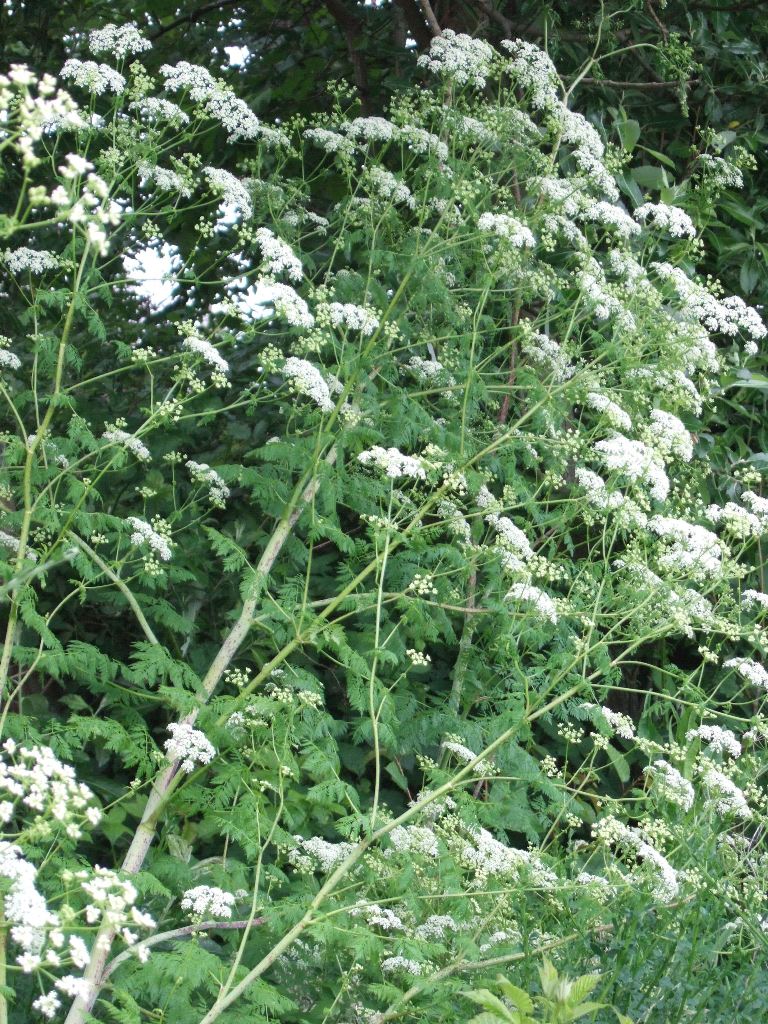- Home
- Services
- Environment
- Our Natural Environment
- Ecosystems
- Invasive Species
Invasive Species
Invasive species are plants or animals that did not originate in a region, but grow rapidly and spread aggressively. They compete for resources with other species, and can degrade habitat and biodiversity.
Invasive species are the second greatest threat to biodiversity in the world, after habitat loss. In British Columbia, it is estimated that 25% of our endangered species are negatively impacted by invasive species. Without efforts to prevent their spread, invasive plants will generally increase their area an average of 14% annually. This exponential rate means that populations double every five years. The CVRD's strategy for invasive plant management consists of a bylaw, invasive plant inventory, removal of key species, and a public awareness campaign.
Common invasive species in the Cowichan Region include Scotch broom, English ivy, Himalayan blackberry, morning glory, and others. Most invasive species can be disposed of at any CVRD Recycling Centre or through the curbside organics collection program. However, four invasive species of concern in the CVRD require special attention, and must be immediately removed due to safety concerns. These include poison hemlock, giant hogweed, knotweed, and spurge-laurel. See the Noxious Plants section below for more information.
Noxious Plants
For the health of our communities and local ecosystems, we need to be especially aware of the noxious invasive species in our region that are highly toxic and damaging. Some of these include giant hogweed, poison hemlock, Daphne/spurge laurel, and knotweed. Currently, two of these plants (giant hogweed and poison hemlock) are included in a bylaw that requires the immediate removal of noxious plants due to their high risk to human and ecosystem health. Their inclusion in this bylaw provides an opportunity to test removal processes before expanding it to additional plants.
Be aware of toxic plants that require immediate removal according to the Noxious Weed Control Bylaw:
Poisonous Plant. Do Not Touch or Eat!Report Poison Hemlock.Poison Hemlock can be found along streams and ditches in our region. All plant parts are highly poisonous and should not be ingested. If ingested, seek immediate medical help. |  |
For more information, please visit:
| Photos courtesy of King County Government, Coastal Invasive Species Committee and Fraser Valley Invasive Species Society. |
Poisonous Plant. Do Not Touch!Report Giant Hogweed:Giant Hogweed has been identified in our region. If touched, the plant can cause skin to become severely irritated. | |
For more information, please visit:
| Photos courtesy of Coastal Invasive Species Committee, Invasive Species Council of Metro Vancouver, and Fraser Valley Regional District. |
Be aware of other priority plants that should be disposed of with care:
While these species are not required to be removed by the CVRD Noxious Weed Control Bylaw, they are still harmful and should be dealt with carefully. It is encouraged that these also be removed.
Poisonous Plant. Do Not Eat!Daphne/spurge-Laurel is found in roadsides and wooded areas across our region. The berries, seeds and leaves are highly poisonous. If touched, the plant can cause skin to become irritated.IdentificationSize: Up to 1.5 m in height | |
For more information, please visit:
| Photos courtesy of Coastal Invasive Species Committee. |
Invasive Plant. Do Not Spread! IdentificationNote: There are several different species of knotweed including Japanese knotweed, Bohemian knotweed, Himalayan knotweed and giant knotweed. Appearances vary slightly depending on species.
Management
Disposal
When dropping off your invasive plant waste, please connect with a staff member to ensure that it is disposed of correctly. Do NOT compost removed knotweed! It can re-seed if composted.Do NOT burn knotweed! This contributes to poor air quality. | |
For more information, please visit:Coastal Invasive Species Committee: Japanese KnotweedKnot on My Property Knotweed Factsheet CRD Sea to Sky Invasive Species Council: Knotweed Fraser Valley Invasive Species Society: Himalayan Knotweed Best Management Practices For Knotweed Metro Vancouver | Photos courtesy of Coastal Invasive Species Committee, King County Government, and Fraser Valley Invasive Species Society. |